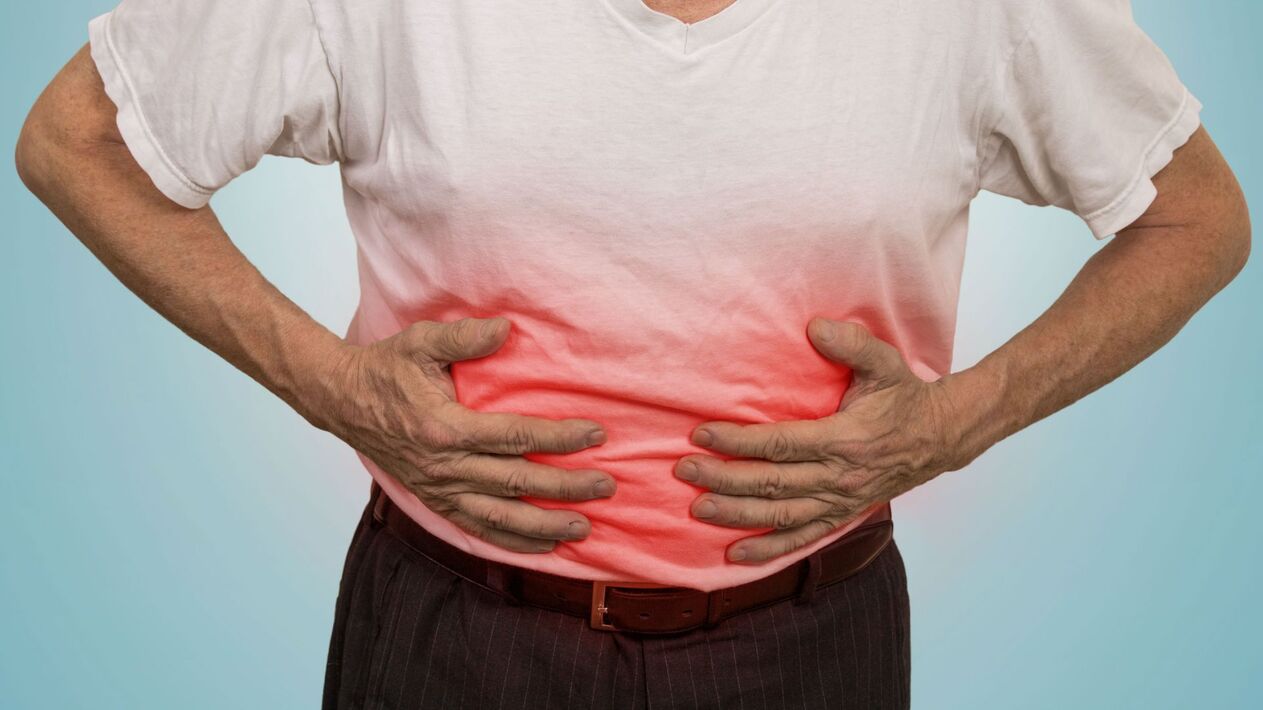
Pancreatitis is an inflammation of the pancreas. It produces enzymes that are involved in the breakdown of proteins, fats and carbohydrates. It also produces insulin, which regulates blood sugar levels. Eating disorders, cravings for spicy and fatty foods, smoking and alcohol abuse, uncontrolled medication - all these factors provoke the development of pancreatitis.
How to recognize pancreatitis and what diet patients should follow, we will tell in this article.
How do you know if you have pancreatitis?
Pancreatitis can be acute or chronic. Its symptoms vary depending on the form.
The acute form is expressed by severe lumbar pain in the upper abdomen. Pain syndrome occurs when you eat something greasy or drink alcohol. Nausea and vomiting, stool problems begin.
In chronic pancreatitis, the pain is localized in the upper part of the peritoneum, radiating to the back, the left side of the chest, the lower abdomen. Discomfort is also observed after consumption of fatty, heavy food, alcohol, as well as against the background of frequent stress.
Signs of acute pancreatitis:
- Severe constant pain around.
- Fever.
- Blood pressure spikes.
- Pale or yellow complexion.
- Intense vomiting, not relieving.
- Constipation, flatulence, salivation.
Signs of chronic pancreatitis:
- Abdominal pain after eating. Local or surrounding, extending to the back.
- The heat causes stomach pain, while the cold is a relief.
- The patient assumes a forced position - knee-elbow position, or sitting position with bending forward.
- Vomiting, diarrhea.
- Weight loss.
It does not matter what form of the disease you have - acute or chronic. You need to be selective about the food you eat and stick to your diet.
What diet is indicated for pancreatitis
The following dietary changes are recommended to prevent exacerbations of pancreatitis:
- Eating 4-5 times a day with an even distribution of foods containing fat in the diet;
- refusal to overeat;
- balanced diet;
- reduction of saturated fats and cholesterol;
- the inclusion in the diet of a sufficient amount of various plant fibers - cereals, vegetables and fruits;
- eating a variety of foods low in saturated fat and cholesterol (unrefined vegetable fats are only slightly limited in overweight people).
What products are allowed
It is a mistake to think that patients with pancreatitis are "deprived" of tasty and varied food. In fact, the list of permitted foods is quite extensive.
So, you can eat:
- Dry white bread, cookies.
- Vegetable soups with noodles, semolina, oatmeal.
- Lean meat.
- Lean fish, topping.
- Porridge (buckwheat (puree), oatmeal, semolina, rice).
- Cottage cheese, cereal puddings and stews.
- Milk and fermented dairy products not more than 2% fat.
- Eggs.
- Vegetables.
- Ripe and non-sour varieties of fruits and berries.
- Oil and vegetable oil.
- Weak tea, non-carbonated mineral water, rosehip broth, juices diluted with water in a ratio of 50 to 50).
Food should be wiped, boiled, steamed. You cannot eat hot or cold food. The optimum temperature is 30-50 ° C. Do not overeat, eat in portions.
What foods should be discarded?
Exacerbation occurs when nutrition and intake are impaired:
- greasy, fried food,
- hot spices,
- a large number of raw vegetables, fruits,
- muffins and pastries (cakes, pies, pastries),
- alcohol,
- carbonated drinks,
- Full-fat milk
Sample menu for patients with pancreatitis
- Breakfast: Milk porridge / milk soup with noodles / boiled noodles. Tea with milk. Dry bread.
- Dinner: Vegetable puree soup, boiled rice / mashed potatoes, boiled fish / meat. tea.
- Snack: Casserole with cottage cheese, jelly / jelly.
- Dinner: vegetable salad with olive oil, boiled meat / fish, jelly.
Necessary snacks. Eat baked apples, low-fat cottage cheese, biscuits between meals.
Keep in mind that medication and diet are equally important. Nutritional therapy returns the pancreas to normal, avoiding exacerbation of the disease. In this case, do not engage in self-medication! If you have symptoms of pancreatitis, see your doctor.































































